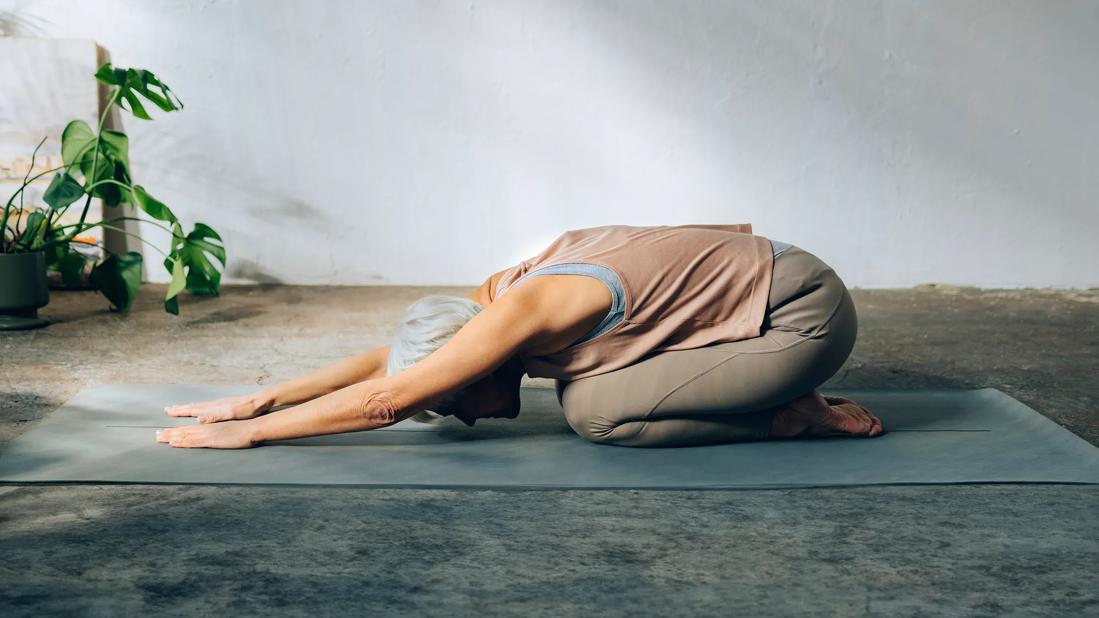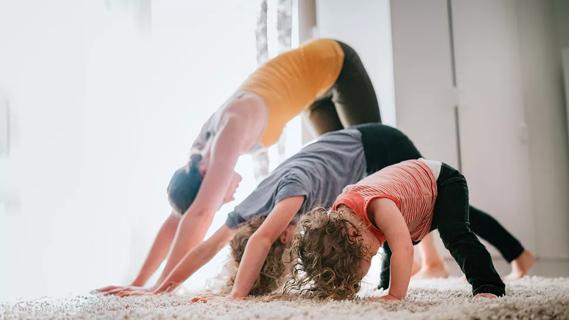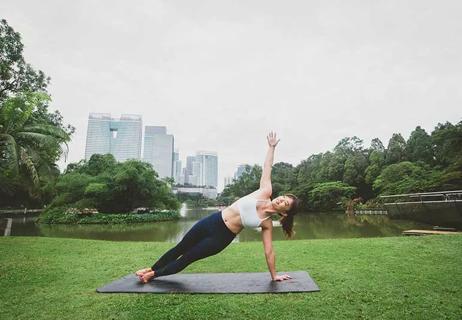Balasana, or child’s pose, is a restorative full-body yoga technique

There are several different kinds of yoga practices, each relying on foundational postures and movements to positively impact the mind and body.
Advertisement
Cleveland Clinic is a non-profit academic medical center. Advertising on our site helps support our mission. We do not endorse non-Cleveland Clinic products or services. Policy
One of the foundational postures, known as child’s pose, revolves around the idea that inaction (the act of doing nothing) can be just as restorative and challenging as any fast-moving posture.
But in truth, you’re not actually doing nothing in child’s pose. You’re bringing awareness to your physical body, making time for deep breathing and recovery as you get a full-body stretch.
Yoga instructor Valerie Williams, RYT 200, explains why child’s pose is such an important posture for any yoga practice and how to do it on your own at home.
Child’s pose is a simple, restorative full-body stretch. Also known as balasana or shishuasana in Sanskrit, its origins stem from traditional yoga practices in ancient India.
In Western yoga classes, child’s pose is often used at the beginning or end of a yoga session or in between more complicated postures. A yoga teacher might have students do the child’s pose after a particularly longer hold or after a series of fast-moving postures (vinyasa) as a form of rest, recovery and contemplation.
While child’s pose isn’t the most active exercise, it’s beneficial for both your mind and body in a few different ways:
Advertisement
“People tend to do a lot of sitting, and we bear a lot of weight on our lower back,” notes Williams. “Child’s pose takes the pressure off your lower back and allows it to stretch and lengthen.”
Child’s pose is meant to be a simple, relaxing stretch, which can be done by following these steps:
“We’re completely letting go in this pose,” says Williams. “We’re not holding any muscles in too tight and we’re trying to allow ourselves to relax and soften into the pose.”
If doing this pose on the floor is difficult, you can do a seated variation of child’s pose or a standing variation beside a firm surface.
Advertisement
For as simple as child’s pose is, there are some things you want to avoid and strategies you want to embrace to help make the most out of the exercise while preventing injury.
“If you are having pain, you shouldn’t ignore it,” advises Williams. “If you experience pain, try to correct it by adding a prop.”
As with any exercise or stretch, consistency is key. The more you work child’s pose into your yoga practice, the more rewarding it can become as you strengthen your flexibility and mind-body connection. It might even be something you’ll want to practice first thing in the morning or the evening right before bed as a means of relaxation and restoration.
“Child’s pose is often underrated because it doesn’t seem like you’re doing much, but you’re actually having a huge full-body stretch,” reaffirms Williams. “It’s one of the most beneficial and accessible yoga poses for all ages and abilities.”
Advertisement
Learn more about our editorial process.
Advertisement

This gentle yoga stretch supports your spine, strengthens your core and calms your mind

Focus on inhaling and exhaling through 12 steps of a complete sequence

Stand tall and feel grounded with this foundational yoga pose

This transitional and restorative yoga pose provides a full-body stretch

Somatic yoga focuses on the sensation and experience of movement — not striking perfect poses

Kids’ yoga can help kiddos become more aware of their physical, mental and emotional selves

This mindful practice is designed to give you mental and physical relaxation

You can work more than your abdominals

The best parenting style balances enforcing rules and showing plenty of love

Tips include cutting back on sugar, focusing on exercise and managing stress

It can be harder to let go when you’ve invested time, energy and emotions — but it might be the healthier choice long term